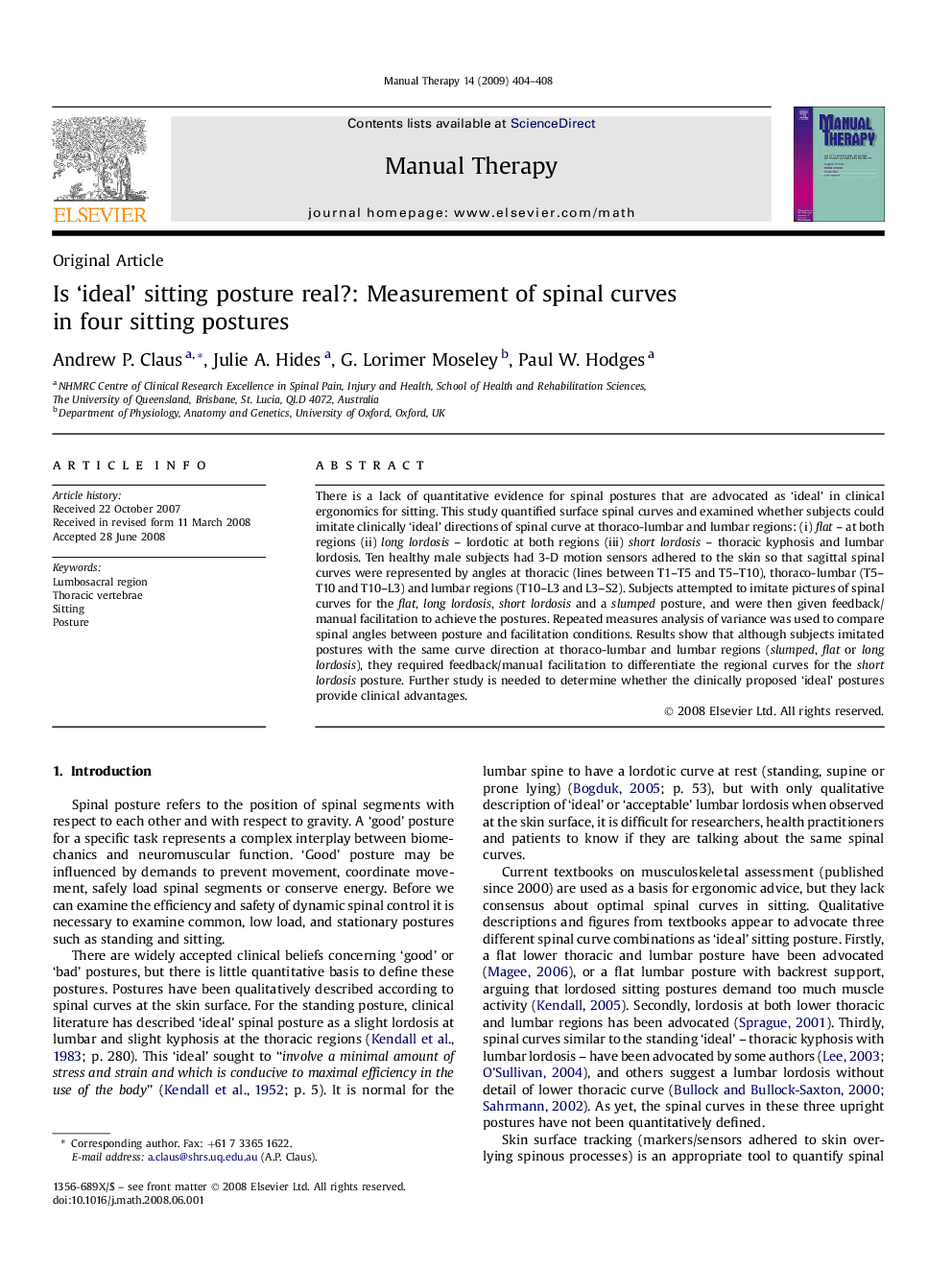| Article ID | Journal | Published Year | Pages | File Type |
|---|---|---|---|---|
| 2625639 | Manual Therapy | 2009 | 5 Pages |
There is a lack of quantitative evidence for spinal postures that are advocated as ‘ideal’ in clinical ergonomics for sitting. This study quantified surface spinal curves and examined whether subjects could imitate clinically ‘ideal’ directions of spinal curve at thoraco-lumbar and lumbar regions: (i) flat – at both regions (ii) long lordosis – lordotic at both regions (iii) short lordosis – thoracic kyphosis and lumbar lordosis. Ten healthy male subjects had 3-D motion sensors adhered to the skin so that sagittal spinal curves were represented by angles at thoracic (lines between T1–T5 and T5–T10), thoraco-lumbar (T5–T10 and T10–L3) and lumbar regions (T10–L3 and L3–S2). Subjects attempted to imitate pictures of spinal curves for the flat, long lordosis, short lordosis and a slumped posture, and were then given feedback/manual facilitation to achieve the postures. Repeated measures analysis of variance was used to compare spinal angles between posture and facilitation conditions. Results show that although subjects imitated postures with the same curve direction at thoraco-lumbar and lumbar regions (slumped, flat or long lordosis), they required feedback/manual facilitation to differentiate the regional curves for the short lordosis posture. Further study is needed to determine whether the clinically proposed ‘ideal’ postures provide clinical advantages.
